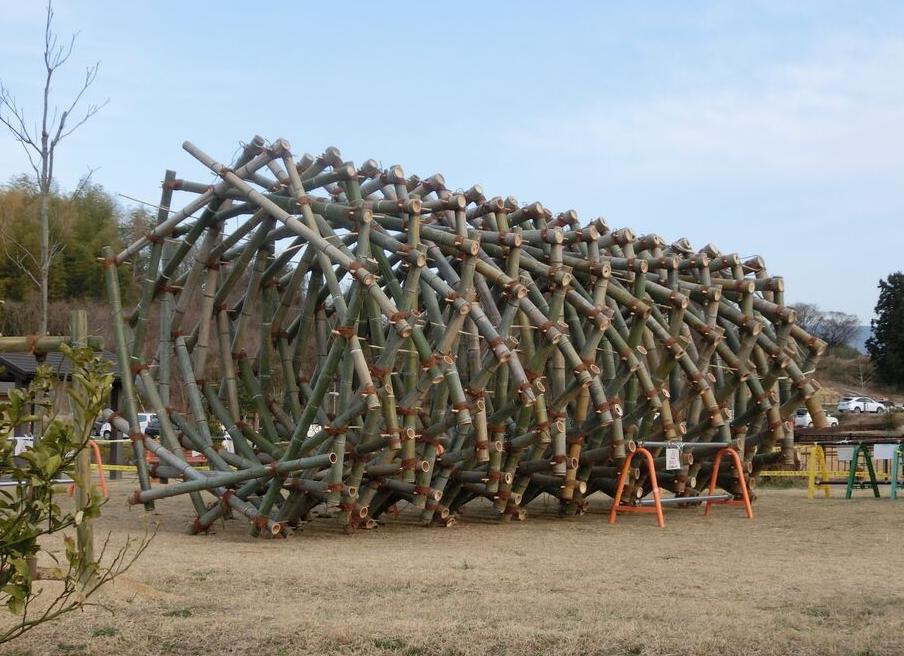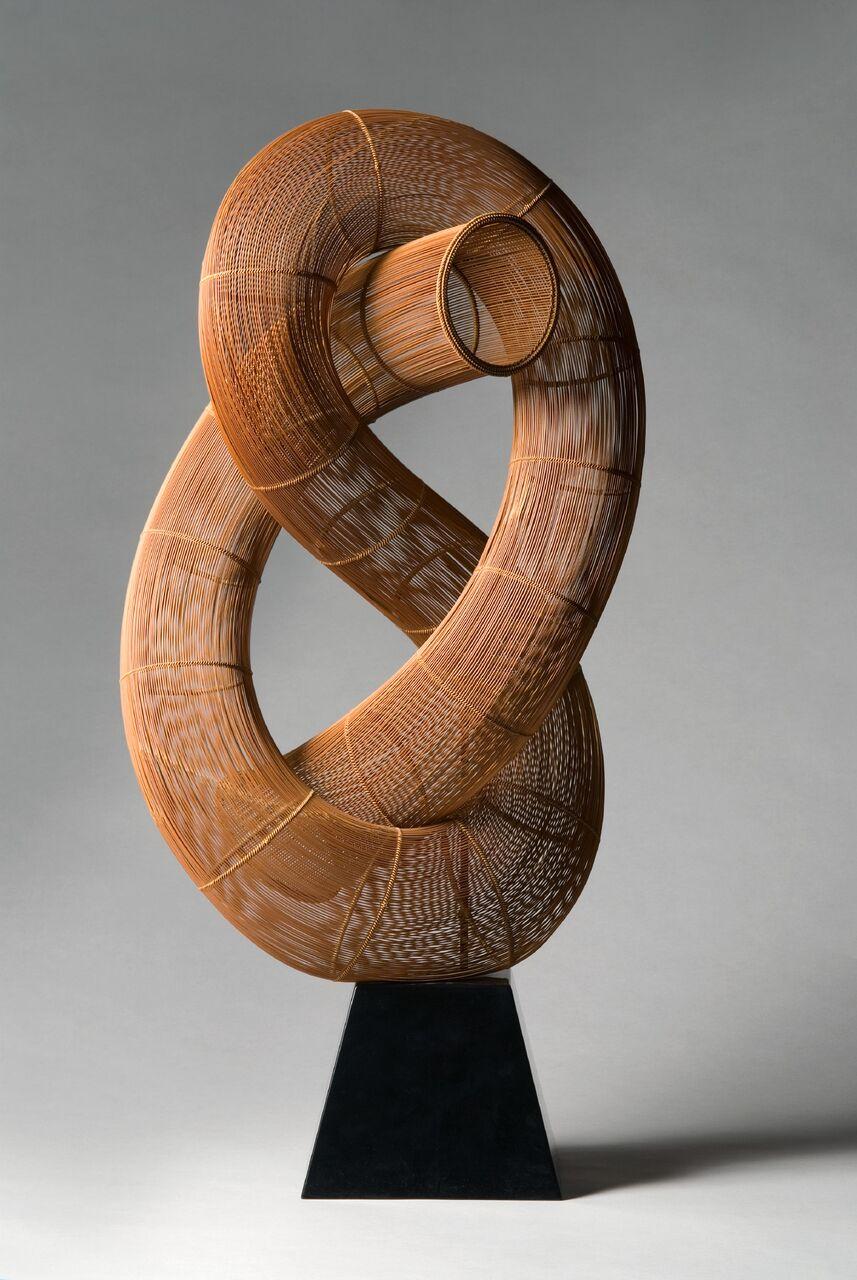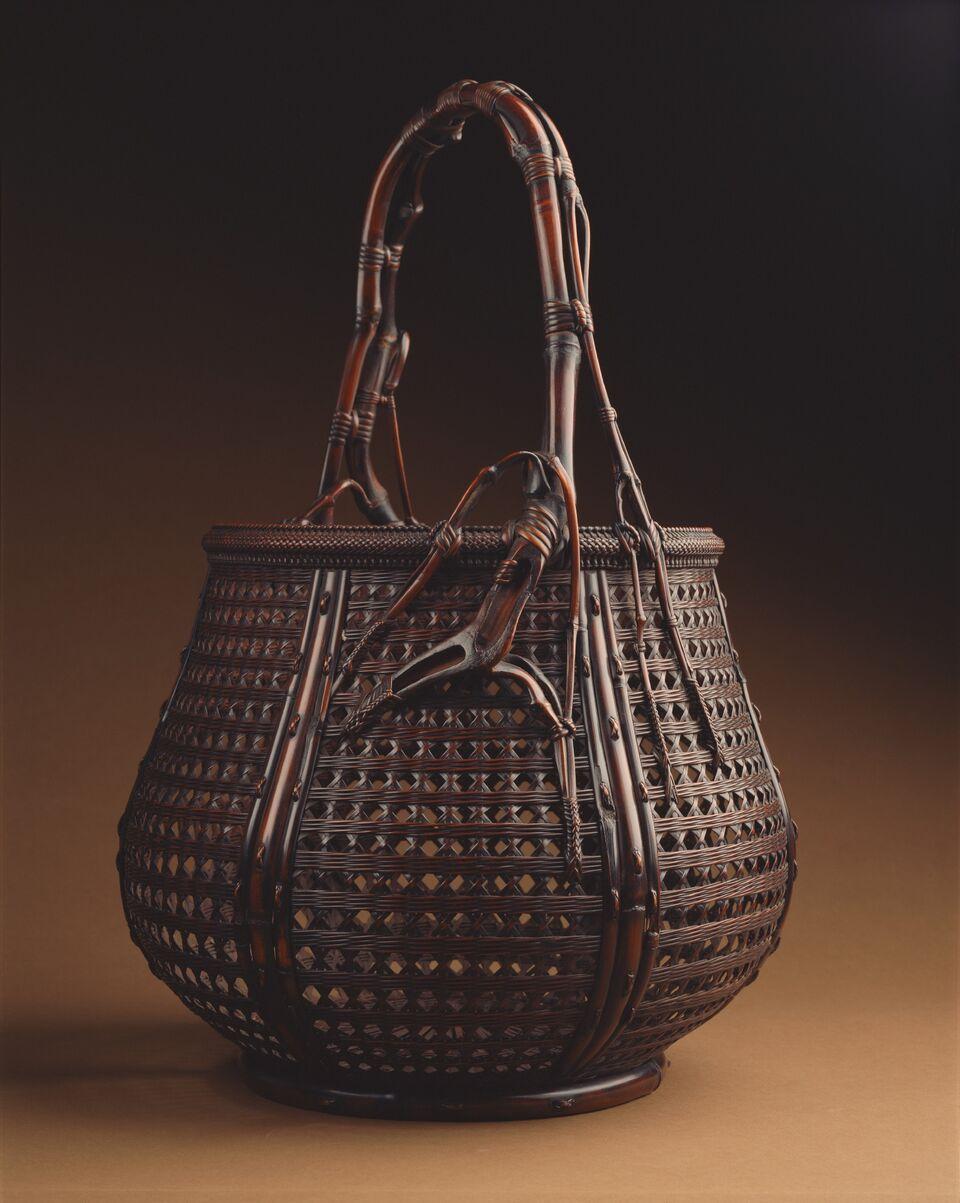While Hizume’s “Fibonacci Tunnel” is impressive in size and construction, the smaller works in the show are also inspiring. The sensuous, organic forms show the capabilities of bamboo: it is supple yet strong, and evocative in both complex construction and simple, elegant designs. All of these works show how creating bamboo objects, once a craft created out of necessity, continues to grow as a diverse art form, encompassing many possibilities.

Honma Hideaki, Basketry Sculpture; “Sign of Wind”, 2002
The versatile ways contemporary artists use bamboo is explored in a new exhibition at the Craft and Folk Art Museum (CAFAM) in Los Angeles. Japanese bamboo weaving is an art form that dates back centuries. A uniquely challenging medium, bamboo can be bent, tied, woven, plaited and dyed in a range of techniques that artisans have developed and passed down through generations of masters. Traditionally used for fine functional objects like baskets, since the 20th century, artists have become increasingly experimental, creating more sculptural works.
The works in ‘Bamboo’ show this progression, with objects ranging from functional to fantastical. The inclusion of a large-scale installation by Akio Hizume’s “Fibonacci Tunnel” (2018), takes this to new heights. Blending architecture, traditional weaving and construction techniques, and geometric principles, the installation is meant for visitors to walk through and interact with.

Akio Hizume, Site-specific installation; “Fibonacci Tunnel,” 2018
Bamboo is on view at CAFAM through September 9, 2018. For more information visit http://www.cafam.org/exhibitions/current-exhibitions



























